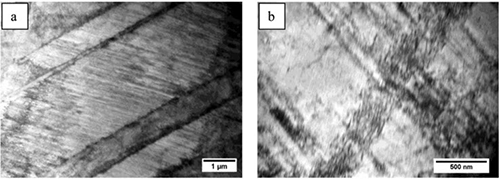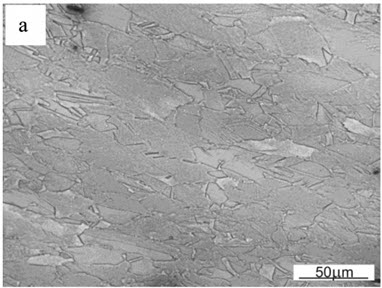TRIPLEX Alloys
Abstract
TRIPLEX alloys are one of two main groups of high manganese steels, the other being the well known TWIP group of materials with the main differences between the groups being the aluminum and silicon content of the material.
TRIPLEX materials possess a lower density in combination with high strength and plasticity which means they are excellent candidates to increase safety in vehicle crash scenarios.
High manganese steels can be divided into two basic variants. The first one represents TWIP materials (twinning induced plasticity) characterized by a Fe-Mn-C chemical composition, with low aluminum content, eventually, and even with limited silicon, respectively. The second material known as TRIPLEX is constituted on the basis of Fe-Mn-C-Al with an aluminum content higher than 8 % and without the addition of silicon.
Depending on the high manganese type and on the carbon content, the manganese reaches a higher level than 19 wt. % usually and therefore guarantees the basic austenite microstructure of the FCC type. The TWIP alloy microstructure is monolithic, austenitic and the sole deformation process is twins, whereas the basic FCC TRIPLEX microstructure shows annealing twins.
Furthermore, the microstructure consists of 8-10 ferrite wt. % in average and of the practically the same nano-size k-carbides volume fraction. The sole deformation mechanism is shear induced plasticity, so called SIP-effect, accompanied with dislocation glide. Shear bands have regular arrangement in {111} planes.
High-strength alloys based on Fe-Mn-Al-C represent a new group of high-manganese alloys with high aluminum content (so-called TRIPLEX alloys). At the initial stage the creation of the investigated alloys, containing (12.7 – 25.6)% Mn, Al (up to 14.4)%, carbon and carbon or nitrogen, was mainly motivated by the opportunity to replace the more expensive austenitic chromium-nickel corrosion-resistant steel, which coincide with the investigated alloys in many aspects of their application.
Any aluminum addition over 1 wt. % not only supports an appreciable increase in stacking fault energy, but also corrosion resistance and in the case of TRIPLEX materials, it reduces the matrix density significantly as well, together with the presence of manganese.
Conversely, higher aluminum addition always tends to mean more complications during manufacturing of the given alloy types which is a consequence of its high affinity for oxygen and also strong bonding to nitrogen.
The basic matrix of TRIPLEX alloys is the austenitic one. During processing, the addition of aluminum supports partial transformation to ferrite. Ferrite should not exceed 15 % limit and manganese content, generally higher than in TWIP type alloys, should keep higher carbon levels in the solid solution.
The microstructure of a TRIPLEX steel is composed of the austenitic γ-Fe(Mn, Al, C) solid solution matrix possessing a fine dispersion of nano-size κ-carbides (Fe,Mn)3AlC1−x and α-Fe(Al, Mn) ferrite of varying volume fractions. These materials constitute a group of alloys of high strength and plasticity, and are also characterized by a smaller density in comparison with currently utilized steels.
These alloys possess specific energy absorption values about 0.4 J/mm3. Materials possessing such characteristics fulfill their functions well in the course of a possible collision of a vehicle, which ensures a higher level of safety. The microstructures and the mechanical properties of the austenitic Fe-Mn-Al-C alloys have been extensively studied.
The microstructures of the Fe-28Mn-9Al-1C steel after ageing at 550°C for various times are presented in Figure 1. After 23% deformation, austenite grains with twins are visible on Figure 2.

Figure 1: TEM micrographs of the Fe-28Mn-9Al-1C steel after 23% reduction and ageing at 550°C for 2 hours (BF)
After ageing at 550°C for 2 hours, the effects of deformation are still visible in the austenite grains. High density of dislocations and numerous bands were observed (Figure 1a). The microstructure was very inhomogeneous and, only in small areas, were the initial stage of spinodal decomposition and the formation of a modulated structure observed (Figure 1b).

Figure 2: An optical micrograph of specimen after 23% reduction
¡Encuentre al Instante Miles de Diagramas de Metalografía!
Total Materia Horizon contiene una colección única de imágenes de metalografía de una amplia gama de aleaciones metálicas, países, normas y tratamientos térmicos.

Obtenga una cuenta de prueba GRATUITA de Total Materia Horizon y únase a nuestra comunidad que traspasa los 500.000 usuarios provenientes de más de 120 países.